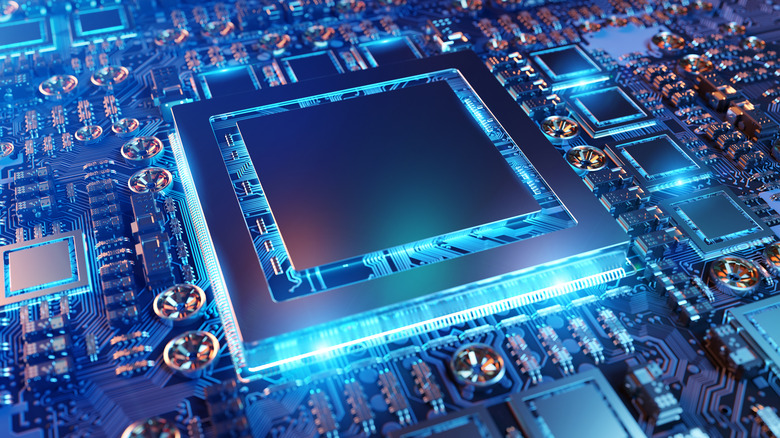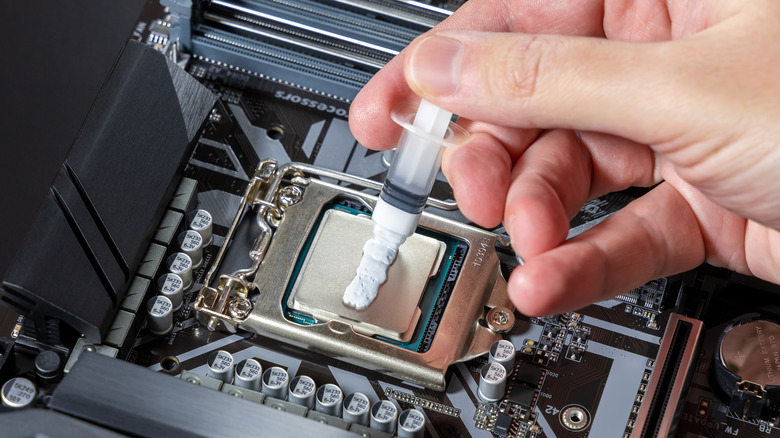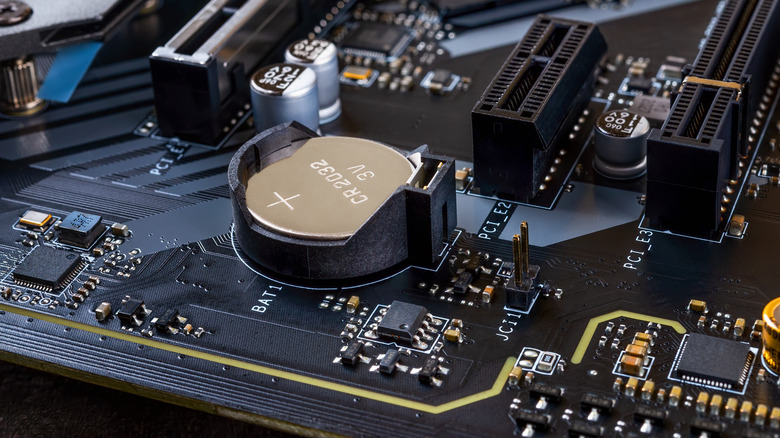5 Signs That Your CPU Is Failing On Your PC Or Laptop
Your computer's central processing unit, or CPU, is the equivalent of a computer's brain. It helps to power your computer's behavior, telling everything connected to it what to do by making calculations after fetching and executing a program's instructions. As intelligent and expensive as they can be, though, CPUs can also be pretty delicate too. Some have pins on the bottom that require careful installation to seat them on a motherboard, and nearly all of them give off so much heat that they need dedicated CPU coolers to keep them running at safe temperatures. For most computers, this involves a heatsink and fan being affixed to the CPU with a layer of thermal paste in between that makes sure heat properly flows into the cooler.
Since the CPU is your computer's brain, any compromise can cause all sorts of misbehavior from your system. Some of these can be mistaken for other general hardware issues, and need to be investigated to determine their exact origin. Still, there are telltale signs of an ailing CPU.
It's overheating
One thing that can be a sign of major CPU malfunction and cause all sorts of related issues itself is if it overheats. You can track a CPU's temperature through one of numerous system monitor apps that can usually warn you if it starts to get dangerously hot. Depending on how bad and long-term the overheating is, you could end up with anything from permanent hardware failures to visible burn or scorch marks on the chip.
Other symptoms of overheating CPUs include excessive fan noise, which might be your computer's attempt to cool the CPU down. Computer systems also tend to "throttle," or slow system performance, to give the CPU time to cool down. Your computer may also randomly shut down, or shut off shortly after booting up.
Determining the long-term impacts of an overheating CPU depends on how long it was overheating, how hot it was getting, and how much damage was done in the process. If your CPU is salvageable, then the fix depends on the problem. You may need to re-install or replace a malfunctioning cooler, replace dried-up thermal paste with a fresh coat, or improve the overall ventilation in and around the computer's case.
Your computer keeps freezing up
Another possible sign of a malfunctioning CPU is that your computer routinely stops updating the screen and can't be controlled by mouse or keyboard. This process, often called "freezing," could be another sign of your CPU overheating.
But before you identify the CPU as your problem, it's important to rule out other issues first. Your computer could be freezing because of improperly seated RAM sticks, insufficient RAM, busted drivers, malware, or any sorts of other software issue. One way to out that a software issue is to boot into your operating system's "safe mode," which effectively disables all non-essential software.
Once you have ruled out software issues, you can try to narrow down what hardware is acting up. Additional steps may vary depending on what kind of computer you're using. For example, on a Mac, you can reset the Non-Volatile Random Access Memory (NVRAM), which can fix a myriad of oddball hardware issues. The same goes for the Mac's System Management Controller (SMC). On other computers, you may need to change your BIOS settings, or potentially remove non-essential hardware like extra hard drives or video capture cards, to help narrow down the problem.
Your computer starts beeping a lot
Something else to keep your eye on — or in this case, ears — is if your computers starts to beep a lot, sounding like, well, an old-fashioned computer. This is particularly true if it's making uncharacteristic beeping sounds when your computer first starts booting at the POST (power-on self-test) stage. Unfortunately, decoding what the beeps mean depends on who made the computer, and in particular which manufacturer produced the motherboard for your machine. The beeps are designed to occur in recognizable codes that can be cross-referenced with the motherboard manual, which you can usually find online if the original isn't handy.
A malfunctioning CPU is among the most common causes of POST errors and beep codes, though it's not the only reason. Beeps can also indicate issues with the motherboard, RAM, and video card. One common beep code for CPU issues is a series of five or seven beeps.
You get the Blue Screen of Death
Another sign of hardware failure that can point to a CPU issue is the infamous "Blue Screen of Death" in Windows, also known as the critical process error screen. On non-Windows devices, the screen isn't always blue, but they're often called Kernel Panics in Linux, macOS, and other Unix-style OSes. The BSoD, as it's called, generally happens when there's a communication breakdown between your computer's hardware and software. The information on the screen is designed to help you identify the problem, so it's always a good idea to take a picture of the BSoD before shutting down, restarting, or doing anything else.
The good news is that Microsoft has improved the BSoD over time. About a decade ago, with the 2012 release of Windows 8, Microsoft changed the error to be a little more personable, including a more descriptive error message alongside a big sad-face emoticon. Now, if the issue lies with your CPU, Windows will typically say so.
Boot loops
Another possible sign of a failing CPU is what's commonly referred to as a boot loop. This is when a computer gets stuck in the initial boot-up process and keeps restarting itself before it begins loading Windows or any other programs. Boot loops can be caused by a lot of the same issues we've discussed, including a poorly-installed CPU or cooler, a lemon of a CPU straight out of the box, neglecting to plug in the CPU fan header, or poorly-applied thermal paste. If you can activate your computer's BIOS software, then you may at least be able to identify if the fans are running correctly, and the temperature of your CPU.
Broadly speaking, a boot loop happens because various expected "handshakes" between the hardware and software fail, keeping the computer from loading Windows, Linux, or MacOS. Your computer then reboots to try to resolve the problem, but when that doesn't work, it becomes an endless loop of failed boot attempts.
Your computer is slow or laggy
A faulty CPU could also be the culprit if your computer is performing unusually slow between when you use the mouse or hit a key on the keyboard, and when those actions appear on the screen. Computers have gotten fast enough that any noticeable lag is a warning sign, though this behavior can be caused by anything from a glitchy program to too many files on your hard drive, malware, or hardware issues.
Checking the CPU temperature should be one priority, and it might be worth running a stress test to determine if the processor is failing and at fault. Tech review and news publication Tom's Hardware recommends using the stress test feature of the $60 system audit app AIDA64 for this, which that publication uses in their own testing of CPUs for reviews and benchmarking. "If you're looking to test an aging system by slowly increasing the load until hitting its limit, you have a good place to start here," the publication wrote in its stress test guide.






